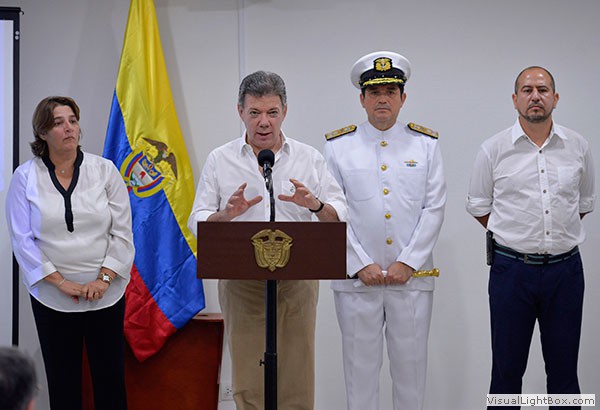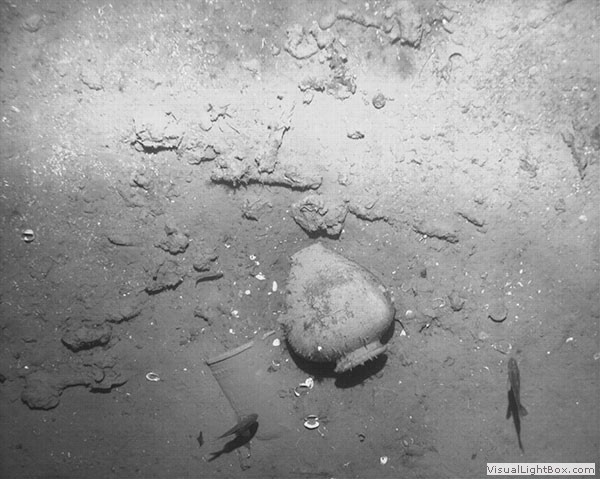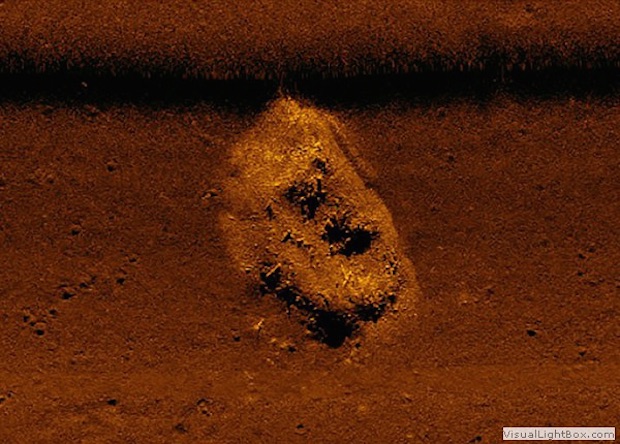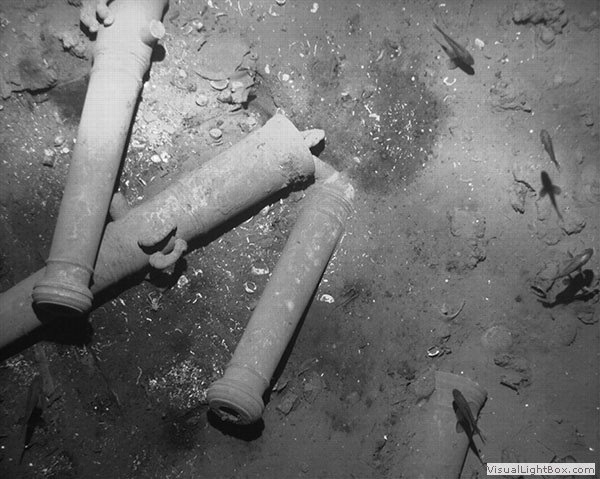In Photos: Treasure Ship Holding Gold and Emeralds Discovered
A shipwreck has been located on the bottom of the Caribbean Sea off the Colombian coast that may be the long-sought San Jose galleon. Built in 1696, the behemoth located on sonar and with an autonomous underwater vehicle to find the ship. Parts of the original structure are visible on the ocean floor, according to the president's office, along with ballast, bronze cannons, ceramics, porcelain vases and weapons. [Read the full story on the treasure ship]
Fiery end
The San Jose, a 60-gun Spanish galleon, explodes during a battle with the English in June 1708. This oil painting by Samuel Scott depicts the conflagration, which is now known as Wager's Action after the English admiral who attacked the San Jose and her surrounding treasure fleet. The explosion sent tons of gold, silver and precious gems to the bottom of the Caribbean. (Credit: Samuel Scott)
Presidential announcement
Colombian president Juan Manuel Santos announces the discovery of the wreck of the San Jose at a press conference on Saturday, Dec. 5. According to the president, the shipwreck was identified by its cannons during underwater surveys by Colombian archeologists and international experts.
A U.S. salvage firm claims to have discovered the ship in 1981 and has fought an extended legal battle ever since for rights to the treasure inside, which may be worth between $4 billion and $17 billion. The Colombian government argues that court rulings have upheld its ownership of the treasure; the U.S. firm contends that the matter is not settled and they are owed half the loot. The Spanish government may also make a claim on the haul. (Credit: Colombian Ministry of Culture and the Colombian Institute of Anthropology and History)
Wreckage remains
Get the world’s most fascinating discoveries delivered straight to your inbox.
Ceramic and porcelain vessels rest among the wreckage thought to belong to the San Jose. The Colombian government has not released the exact location of the shipwreck, but the San Jose went down off the Colombian coast not far from Cartagena. Some 600 men died when the ship erupted in flames and sank rapidly. Most historical sources claim that the San Jose exploded when the English bombardment ignited its powder room. However, the Colombian government said it may have actually taken on water rapidly when English guns breeched its already-damaged hull. A further study of the wreckage may reveal what really happened. (Credit: Colombian Ministry of Culture and the Colombian Institute of Anthropology and History)
Mined treasure
A vessel rests on the seafloor in the wreckage of the San Jose. The ship was carrying an unusually large load of treasure from mines in Peru, which was on its way to Europe to fund Spanish and French forces in the War of Spanish Succession. The war, which ran from 1701 to 1714, was over who would control the Spanish empire after the death of Spanish king Charles II. (Credit: Colombian Ministry of Culture and the Colombian Institute of Anthropology and History)
Ship cannon
One of the cannons found in the Colombian shipwreck. The San Jose was a warship, equipped with 60 guns and a crew bristling with weaponry. She was carrying much of the treasure in the armada, while her sister ships the San Joaquin and the Santa Cruz carried smaller amounts. After the San Jose went down, the English captured the Santa Cruz, but found next to no riches aboard. The Santa Cruz evaded the English forces with its treasure. (Credit: Colombian Ministry of Culture and the Colombian Institute of Anthropology and History)
Sonar discovery
A seafloor image of the shipwreck that the Colombian government has identified as the San Jose. The wreck has yet to undergo an archaeological exploration, leaving questions about what riches might be found. The type and number of bronze cannons found at the site leaves no doubt that ship is the San Jose, according to a statement by Ernesto Montenegro, an archaeologist and head of the Colombian Institute of Anthropology and History. (Credit: Colombian Ministry of Culture and the Colombian Institute of Anthropology and History)
Lost cannons
Cannons from the wreck identified as the lost galleon San Jose. The Colombian government has been relatively tightlipped about the discovery, beyond an official news release. In a presentation to the media, the president said that the discovery was "a matter of the Colombian state," and as such, few people would be authorized to speak to the public about the findings. (Credit: Colombian Ministry of Culture and the Colombian Institute of Anthropology and History)
Follow us @livescience, Facebook & Google+.

Stephanie Pappas is a contributing writer for Live Science, covering topics ranging from geoscience to archaeology to the human brain and behavior. She was previously a senior writer for Live Science but is now a freelancer based in Denver, Colorado, and regularly contributes to Scientific American and The Monitor, the monthly magazine of the American Psychological Association. Stephanie received a bachelor's degree in psychology from the University of South Carolina and a graduate certificate in science communication from the University of California, Santa Cruz.









